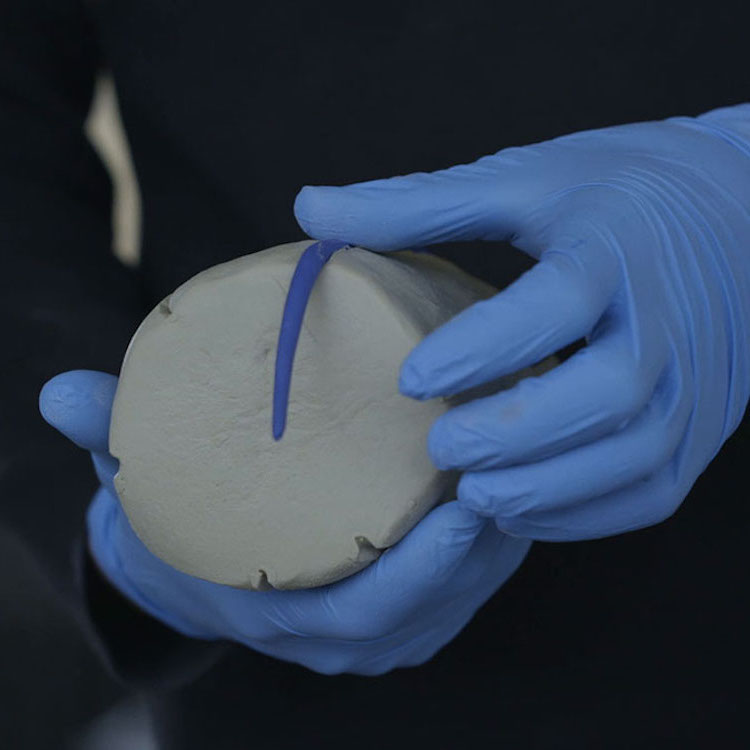THE HAGUE, The Netherlands—In the footsteps of Ineke Hans, Wieki Somers and Jurgen Bey, Olivier Van Herpt was asked to make a contemporary porcelain piece for the Gemeentemuseum Den Haag. To achieve this goal, Van Herpt developed the first large-scale porcelain 3D printing technique.
The pieces that were 3D printed in porcelain now adorn a Dutch delftware flower pyramid dating from the 17th century. To celebrate delftware, Van Herpt 3D printed 14 stackable porcelain pieces mixed with cobalt pigment to evoke a new interpretation of delftware.
The pieces will remain in the permanent collection of the museum and are currently on display. The piece is called Arcanum (2016-2017). Arcanum refers to the secrets and mysteries that surround porcelain. For centuries European artisans tried unsuccessfully to copy the Chinese. Chinese porcelain was widely admired and traded worldwide for thousands of years. Europeans attempted to imitate it but were thwarted by the technical complexity of making porcelain. Delftware itself originated once artisans in the Netherlands were able to make a simulacrum of Chinese porcelain.
Olivier also had his own secrets to unlock. He had to unravel how to 3D print porcelain and produce a museum quality piece. Incorporating the cobalt in a coherent way proved problematic and this needed to be solved. Shrinkage of the porcelain during drying and firing also had to be corrected for. Eventually, Olivier succeeded in developing porcelain 3D printing with the cobalt pigment. Then he had to design pieces that would complement the flower pyramid in sedately beautiful yet contemporary way. To take the old and make new in a respectful way is a challenge indeed.
Watch Van Herpt’s printer in action:
Text (edited) from press release. Read more here.
Do you love or loathe this 3D printed Delftware from the world of contemporary ceramics and contemporary ceramic art. Share your thoughts in the comments below.








Definitely LOVE. The introduction of randomness in machine work is brilliant and certainly produces amazing pieces. It all comes down to human creativity in the end.